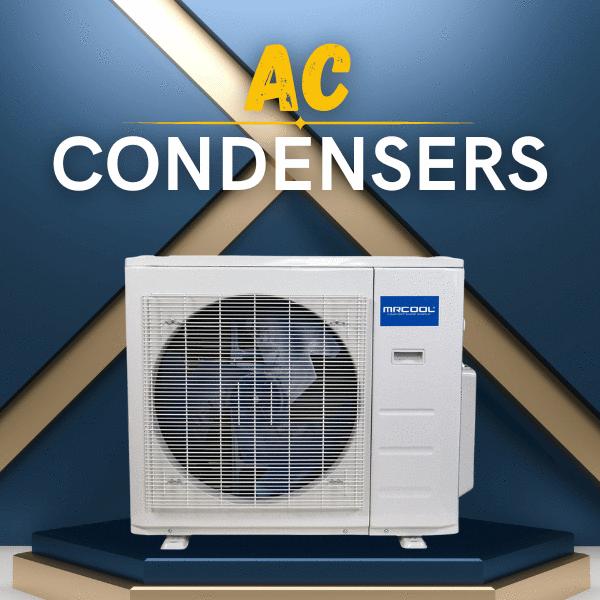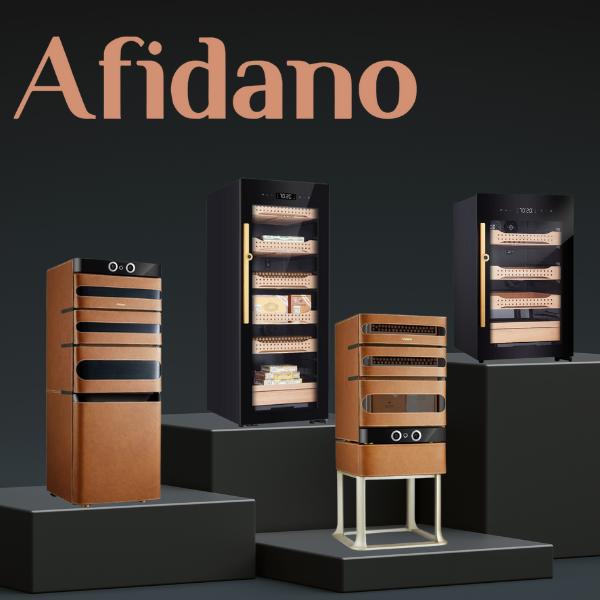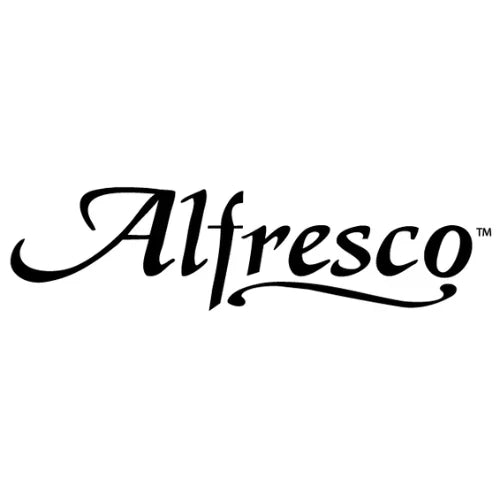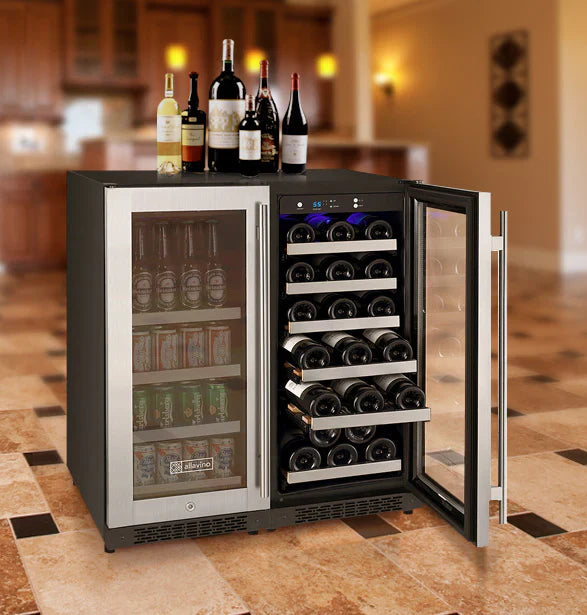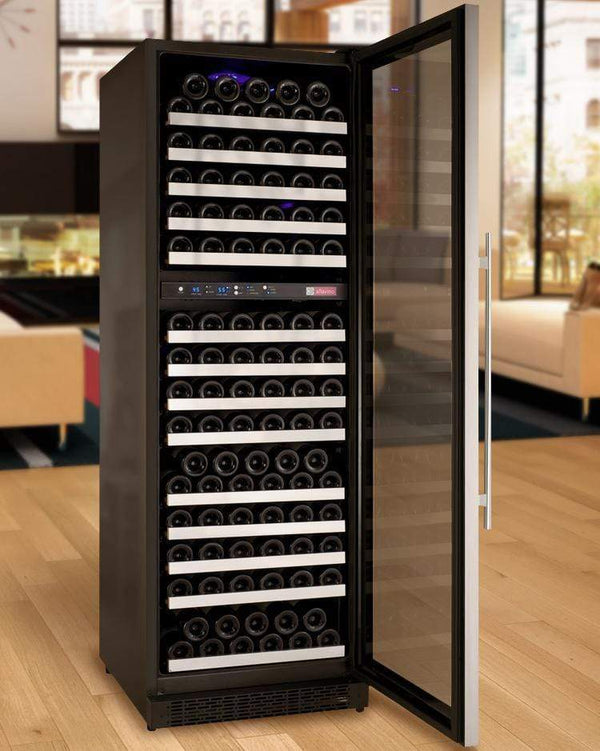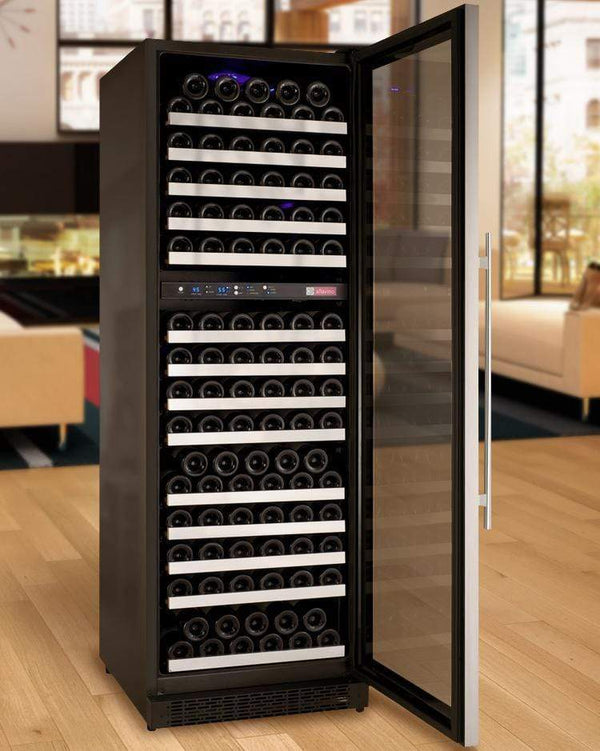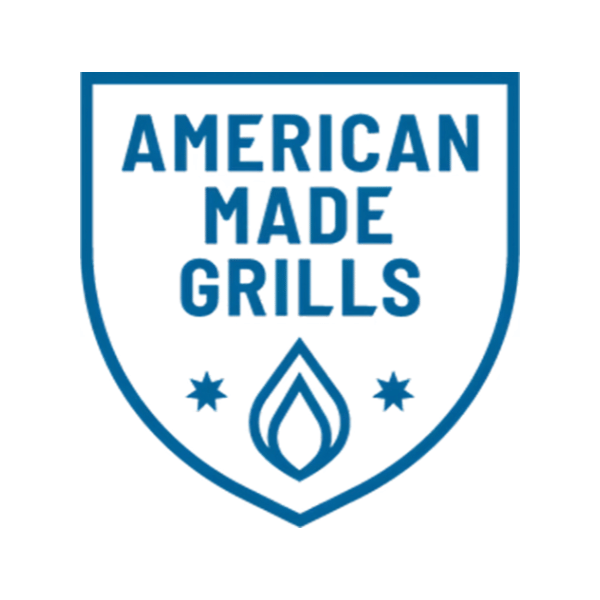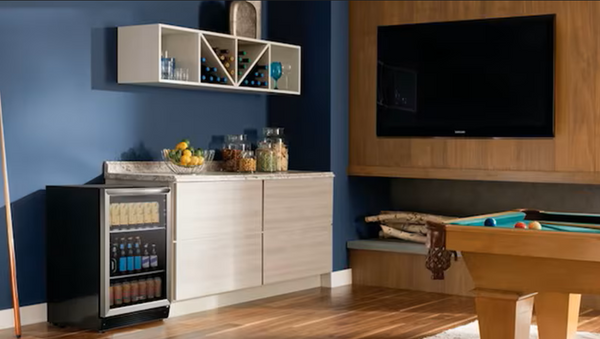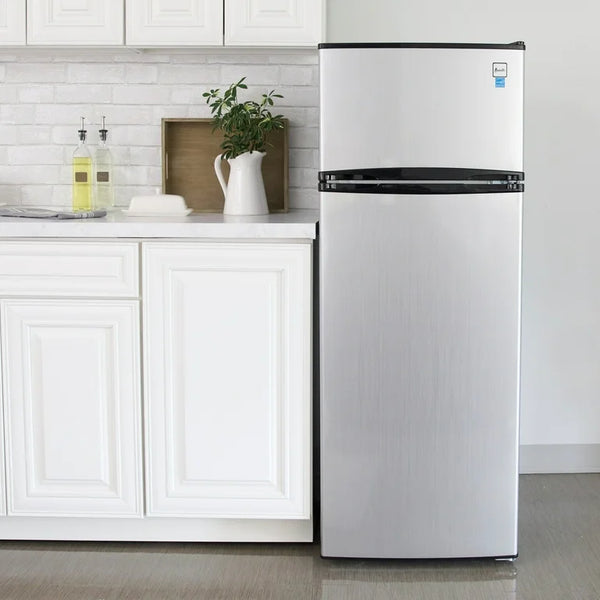Top 3 Quietest Wine Cellar Cooling Units To Keep Your Wine Cool
Why a Quiet Wine Cellar Cooling System Matters
By Jim Hopper, Wine Cooling Expert
When building or upgrading your wine cellar, choosing the right cooling system is crucial for preserving your collection’s quality and ensuring a peaceful environment. The most important considerations should be wine cellar humidity and wine cellar temperature control, low-maintenance performance, energy efficiency, and, of course, silent operation.
For a comprehensive guide to wine cooling and serving—including tips on storage, temperature, and more—see our Wine Cooling and Serving Guide.
Many traditional self-contained and split systems use mechanical parts that can generate significant noise within the cellar. If you want your cellar to be as quiet as possible, Fully Ducted – Self-Contained Wine Cellar Cooling Units and Ducted Split Wine Cooling Systems are often the best solutions, as they can locate noisy components away from your wine storage area.
Why You Need a Dedicated Wine Cellar Cooling System
Storing wine isn’t as simple as keeping it cool. Standard refrigerators or passive environments can't maintain the precise temperature and humidity needed for proper wine preservation. Fluctuations in temperature or low humidity can cause corks to dry out, allowing air into bottles and spoiling your collection. Dedicated wine cellar cooling units are engineered to keep wines at a stable 55°F and 50–70% humidity, helping your bottles retain their flavor, aroma, and value over time.
Wine Cooling Basics: Best Practices for Preserving Your Collection

Proper wine storage isn’t just about keeping bottles cool—it’s about creating the right environment to protect every nuance of flavor and aroma. Here are the essential best practices every wine collector should follow:
- Maintain Stable Temperature and Humidity: Keep your cellar at a consistent 55°F and humidity between 50–70%. This prevents corks from drying out or mold forming, safeguarding your wine’s integrity.
- Prioritize Quality Insulation: Insulate walls, ceilings, and doors thoroughly. Proper insulation is the foundation of every effective wine cellar, ensuring your cooling unit doesn’t have to work overtime and keeping conditions stable year-round.
- Minimize Vibrations: Store bottles securely and choose cooling systems with vibration-dampening features. Vibrations can disturb the aging process and diminish wine quality.
- Use Properly Sealed Glass and Doors: If your cellar includes glass doors or windows, make sure they are insulated and well-sealed to reduce heat gain and prevent temperature swings.
- Plan for Redundancy: For serious collectors, consider backup power, remote monitoring, or even dual cooling units. Redundancy ensures your collection remains safe during power outages or equipment failures.
- Consult a Professional: Work with a wine cellar specialist for design and installation. Expert guidance helps avoid costly mistakes and ensures your cellar meets both your needs and industry standards.
- Regular Maintenance: Clean filters, inspect seals, and schedule annual servicing to keep your cooling system running quietly and efficiently for years to come.
Why These Basics Matter: A well-designed wine cellar does more than just chill bottles—it preserves the essence of every vintage, letting you enjoy each pour as the winemaker intended. By following these best practices, you protect your investment and ensure every bottle reaches its full potential.
Quick Comparison Table: Quietest Wine Cellar Cooling Units
| Model Type | Noise Level | Coverage | Key Features |
|---|---|---|---|
| WhisperKOOL Extreme tiR | As low as 51 dB | Up to 2000 cu.ft. | Variable speed fans, remote display, robust for extreme climates |
| WhisperKOOL Phantom | Very quiet | Up to 2000 cu.ft. | Flexible ducting, UV-C option, remote thermostat |
| WhisperKOOL Platinum Split Ducted | Extremely quiet (condenser outside) | Up to 3000 cu.ft. | Split design, 24V thermostat option, easy installation |
Understanding Quiet Wine Cellar Cooling Systems

Why Quiet Operation Matters
A quiet wine cellar cooling system lets you enjoy your collection, entertain guests, or simply relax without the distraction of mechanical noise. This is especially important for cellars located near living spaces or in homes where peace and quiet are valued.
Key Factors to Consider When Choosing a Wine Cellar Cooling Unit
Selecting the right cooling unit goes beyond noise level. To ensure your wine collection is properly protected and your cellar operates efficiently, keep these essential factors in mind:
If you’re new to wine cellars or selecting your first cooling system, our Best Wine Cellar Cooling Unit for Beginners guide makes the process simple and stress-free.
- Cellar Size & Cooling Capacity: Match the cooling unit’s rated coverage (in cubic feet) to your cellar’s actual volume. Oversized units can short-cycle and waste energy; undersized units may struggle to maintain stable conditions.
Humidity Control: Reliable humidity management (ideally between 50% and 70%) is essential to prevent corks from drying out or mold from forming. Choose a cooling unit with built-in humidity control to protect your wine investment.
- Insulation & Sealing: Well-insulated walls, ceilings, and doors are crucial. Poor insulation or gaps can force your cooling unit to work harder, affecting both performance and longevity.
Proper insulation isn’t just about energy savings—it’s essential for maintaining consistent temperature and humidity. Consider upgrading insulation or using insulated glass doors for best results. Learn more about wine cellar insulation best practices.
-
Ventilation & Airflow:
Ensure there’s adequate space for ductwork or venting, especially for fully ducted and split systems. Good airflow prevents heat buildup and supports consistent cooling.
Vibration Control: Beyond quiet operation, minimizing vibration is crucial for protecting your wine’s delicate flavors and aromas. Look for units with vibration-dampening mounts or technology to ensure both cellar peace and wine quality.
- Installation Flexibility: Some cooling units offer flexible installation options—such as the ability to place the condenser up to 25–50 feet away, or adjust blower positions to fit your cellar’s unique layout. These features can simplify installation and further reduce noise in your wine room.
-
Electrical Requirements:
Confirm that your cellar or installation area meets the electrical needs of your chosen system. Some high-capacity or split units may require dedicated circuits. -
Compatibility with Cellar Materials:
Glass doors, large windows, or unique architectural features may require more powerful cooling or specialized installation. -
Future Expansion:
If you plan to grow your wine collection, choose a unit with a little extra capacity to avoid an upgrade later. - Ease of Maintenance: Choose a cooling system with features that make regular upkeep simple—such as remote digital displays, accessible wiring, or tool-free filter changes. This will help maintain quiet, efficient operation over time.
-
Long-Term Flexibility & Maintenance:
Select a cooling system that can adapt as your collection grows—look for modular units or models with expansion kits. Features like remote monitoring or smart controls can help future-proof your investment. Remember, regular maintenance (such as filter changes and professional servicing) not only extends your unit’s lifespan but also helps it remain quiet and efficient.
How to Prioritize Cooling Unit Factors for Your Cellar
Every wine cellar is different, and the most important features for one setup may not be as critical for another. Here’s how to weigh your priorities:
- Noise Sensitivity: If your cellar is near living areas or you value a tranquil environment, prioritize ultra-quiet or fully ducted systems.
- Space Limitations: For small or uniquely shaped cellars, flexible installation options and compact units may be more important than maximum capacity.
- Climate Challenges: In regions with hot summers or cold winters, robust cooling capacity and superior insulation should be top priorities.
- Growth Plans: If you plan to expand your collection, choose a system with a bit of extra capacity or modular upgrade options.
By identifying what matters most for your situation, you can confidently select a cooling unit that truly fits your needs.
How Real-World Cellar Scenarios Influence Your Choice
Every wine cellar is unique, and real-world factors can influence which cooling unit is best for you:
- Urban Apartments: Limited space and strict noise regulations mean a fully ducted or split system—where the condenser can be placed outside—will help maintain peace and comply with building codes.
- Glass-Enclosed Cellars: Large glass doors or windows increase heat gain, so you’ll need a unit with higher cooling capacity and efficient humidity control to offset temperature swings.
- Converted Closets or Small Spaces: Compact or cabinet cooling units are ideal for tight installations, but pay extra attention to insulation and sealing to prevent overworking the system.
- Basement Cellars: Naturally cooler environments may allow for more flexibility, but proper insulation is still crucial for stable conditions and energy efficiency.
- Unique Cellar Designs: Architectural features like vaulted ceilings, spiral layouts, or proximity to heat sources (such as kitchens or sunlit rooms) can impact cooling performance and noise. These setups may require a unit with higher capacity, custom ducting, or enhanced humidity control. Always account for your cellar’s unique characteristics when choosing your system.
By considering your cellar’s environment and design, you can choose a system that delivers both quiet operation and reliable protection for your collection.
Quick Selection Checklist
- Measure your cellar’s dimensions (length × width × height).
- Check insulation and door seals.
- Identify available installation locations for condenser/evaporator.
- Review your electrical setup.
- Consider any design features (glass, unique shapes) that may affect cooling.
- Decide if you need room for future wine collection growth.
- Choose a unit that matches your needs for quiet operation, coverage, and compatibility.
- For high-value or larger collections, consider selecting a system that supports backup power, remote monitoring, or redundancy features to ensure continuous protection for your wine.
Mistakes to Avoid When Choosing a Cooling Unit
- Skimping on insulation, which can overwork even the best cooling systems.
- Choosing solely based on price rather than long-term performance and suitability.
- Overlooking electrical requirements, leading to costly adjustments post-purchase.
- Failing to plan for future collection growth or changes in cellar use.
Avoiding these common pitfalls ensures your wine cellar cooling solution remains effective and quiet for years to come.
Wine Cellar Best Practices Checklist
For optimal wine preservation, keep these best practices in mind:
- Plan your cellar layout and storage for stability and accessibility.
- Insulate walls, ceilings, and doors thoroughly to prevent temperature swings.
- Maintain humidity between 50–70% to protect corks and prevent mold.
- Minimize vibrations—store bottles securely and choose low-vibration equipment.
- Use insulated or properly sealed glass if your cellar includes windows or doors.
- Consult a wine cellar professional for design and installation guidance.
- Consider redundancy—backup power or monitoring systems—to safeguard your collection.
Types of Wine Cellar Cooling Units: An Overview
Choosing the quietest wine cellar cooling system starts with understanding the main types of units available. Each type—and its sub-types—offers distinct advantages, installation requirements, and noise profiles. Here’s a detailed guide to help you identify which system best suits your cellar’s needs.
1. Self-Contained Through-the-Wall Units
Description: These compact units are installed directly through the cellar wall, similar to a window air conditioner. All mechanical components are contained in a single box, making them easy to install and maintain.
For a deeper dive into top-performing through-the-wall options, see our Best 6 Through-the-Wall Wine Cellar Cooling Units guide.
| Pros | Cons |
|---|---|
| Most affordable and DIY-friendly option | Moderate to high noise inside or adjacent to the cellar |
| Quick installation without ductwork | Limited flexibility for custom layouts |
Best For: Small home cellars, budget-conscious projects, or DIY upgrades.
Installation Complexity: Easiest (DIY possible)
Noise Level: Moderate to high
Example: WhisperKOOL SC PRO 4000 – A popular choice for small to mid-sized cellars, known for reliable performance and simple setup.
2. Fully Ducted Self-Contained Units
Description: These systems combine all components in one unit, but deliver cooled air to and from the cellar via ductwork. The main unit can be installed up to 25 feet away in a remote space, isolating noise and heat.
| Pros | Cons |
|---|---|
| Very quiet in the cellar | Requires ductwork and professional installation |
| Flexible installation allows for hidden equipment | Higher upfront cost than through-the-wall units |
Best For: Custom cellars where maximum quiet and flexible layout are priorities.
Installation Complexity: Moderate (professional installation recommended)
Noise Level: Low
Example: WhisperKOOL Phantom 5000 – Flexible ducting options and ultra-quiet operation, ideal for custom installations.
3. Ductless Split Systems
Description: A split system separates the evaporator (installed inside the cellar) and the condenser (located outside or in a remote area), connected by refrigerant lines. This removes most noise from the cellar.
| Pros | Cons |
|---|---|
| Quiet operation in the cellar | Requires professional (HVAC-R) installation |
| No ductwork required | Some equipment still installed near the cellar |
Best For: Cellars near living spaces, bedrooms, or offices where low noise is crucial.
Installation Complexity: Moderate (professional installation required)
Noise Level: Low to moderate
Example: WhisperKOOL Platinum Mini Split – Designed for quiet operation in cellars adjacent to living areas.
4. Ducted Split Systems
Description:
Both the evaporator and condenser can be installed far from the cellar, with only ducted air delivered to the wine room. This is the quietest and most versatile option.
| Pros | Cons |
|---|---|
| Virtually silent in the cellar | Most complex and expensive to install |
| Maximum installation flexibility | Requires professional installation and planning |
Best For: Large or showcase cellars, or any installation demanding ultra-quiet operation.
Installation Complexity: Most complex (professional required)
Noise Level: Lowest
Example: WhisperKOOL Platinum Split Twin – The quietest solution for large or high-end cellars.
5. Cabinet & Credenza Cooling Units
Description: Compact, self-contained units designed specifically for wine cabinets, credenzas, closets, or very small cellars. They’re ideal for tight spaces and retrofits.
| Pros | Cons |
|---|---|
| Space-saving and easy to retrofit | Moderate noise (all components are in/near the cabinet) |
| Often DIY-friendly for installation | Limited capacity for larger cellars |
Best For: Wine cabinets, credenzas, closets, and other confined spaces.
Installation Complexity: Easiest (DIY possible)
Noise Level: Moderate
Example: Breezaire WKCE Series – Compact and simple to retrofit into most wine cabinets or credenzas.
Quick Reference Table: Types and Sub-Types
| Type | Sub-Type | Installation Complexity | Typical Noise Level | Best For | Example Model |
|---|---|---|---|---|---|
| Self-Contained | Through-the-Wall | Easiest (DIY possible) | Moderate–High | Small cellars, DIY installs | WhisperKOOL SC PRO 4000 |
| Self-Contained | Fully Ducted | Moderate (pro needed) | Low | Custom, quiet cellars | WhisperKOOL Phantom 5000 |
| Split | Ductless | Moderate (pro needed) | Low–Moderate | Near living spaces | WhisperKOOL Platinum Mini Split |
| Split | Ducted | Most complex (pro) | Lowest | Large/pro cellars, showcase installs | WhisperKOOL Platinum Split Twin |
| Cabinet | Credenza | Easiest (DIY possible) | Moderate | Cabinets, credenzas, tight spaces | Breezaire WKCE Series |
Key Types Explained
Self-Contained (Through-the-Wall) Units
These compact, all-in-one systems are installed directly through the cellar wall. They’re easy to retrofit and cost-effective, but since all components are together, they tend to be noisier—making them best for cellars where sound isn’t a top concern.
Ductless Split Systems
This design separates the noisy condenser (placed outside or in a utility space) from the evaporator (inside the cellar). Connected by refrigerant lines, ductless splits greatly reduce cellar noise and vibration, ideal for installations near living areas.
Fully Ducted Self-Contained Systems
Combining all components in one unit, these systems use ductwork to deliver cool air to and from the cellar. The main unit can be located up to 25 feet away, isolating noise and heat for a peaceful cellar experience. Flexible ducting options suit a variety of layouts.
Ducted Split Systems
The quietest and most versatile option, ducted split systems allow both the evaporator and condenser to be installed far from the cellar, with air delivered via ducts. This setup ensures virtually silent operation and is perfect for high-end or large cellars where noise must be minimized.
Cabinet and Credenza Cooling Units
Specifically designed for wine cabinets, credenzas, or very small cellars, these compact, self-contained units are easy to install and retrofit. While not as quiet as ducted or split systems, they’re ideal for collectors with limited space.
Best For Each Type
- Self-Contained: Small home cellars, budget-conscious projects, DIY upgrades.
- Ductless Split: Cellars near bedrooms, offices, or living spaces needing quiet.
- Fully Ducted Self-Contained: Custom cellars where silence and flexible layout are priorities.
- Ducted Split: Professional or showcase cellars, or any situation demanding the lowest possible noise.
- Cabinet/Credenza: Wine cabinets, credenzas, closets, or other tight installations.
Types of Cooling Systems and Their Noise Profiles
- Self-Contained Units: Typically installed through the wall. These are easy to install but tend to be noisier since all components are located together, often inside or adjacent to the cellar.
- Ductless Split Systems: Separate the evaporator (inside) and condenser (outside), reducing noise in the cellar but still requiring some equipment nearby.
- Fully Ducted Self-Contained Systems: Both evaporator and condenser are housed together but can be ducted up to 25 feet away from the cellar, greatly reducing noise.
- Ducted Split Systems: The quietest option. The evaporator can be ducted into the cellar, while the condenser is placed far away (even outside), ensuring a virtually silent cellar environment.
What are Fully Ducted – Self Contained and Ducted Split Systems?
Fully-Ducted – Self-Contained Wine Cellar Cooling Systems

Fully Ducted – Self Contained units are designed for maximum quietness. They can be installed up to 25 duct feet from the wine cellar, with both the evaporator and condenser in the same unit. Ducting allows cool air to be delivered to the cellar while noisy components are kept in a remote location, such as a utility room or attic.
Ducted Split Wine Cellar Cooling Systems

Ducted Split systems offer exceptional silence by separating the evaporator and condenser. The condenser, which generates the most noise and heat, can be placed as far as 25 feet away, keeping your cellar both quiet and vibration-free.
Compact and Cabinet Wine Cellar Cooling Units
Compact and cabinet cooling units are specifically designed for small wine storage spaces such as wine cabinets, closets, or very small cellars. These systems offer a space-saving solution and are ideal for collectors with limited room or those who want to convert an existing cabinet into a climate-controlled wine storage area. While not as quiet as fully ducted or split systems, their low profile and ease of installation make them a practical choice for small-scale needs.
Ideal For:
- Wine cabinets and credenzas
- Small home wine cellars (typically under 300 cu.ft.)
- Closets or other confined spaces
Key Features:
- Compact design for tight installations
- Easy to retrofit into existing cabinetry
- Typically self-contained for straightforward setup
Top 3 Quietest Wine Cellar Cooling Units
Noisy wine cooler units are a thing of the past! Over the years, we’ve come across many wine refrigeration units, and none have matched the silent performance of today’s top models.
Looking for the best deals and reviews on WhisperKOOL cooling systems? Don’t miss our Best WhisperKOOL Cooling Units roundup for exclusive offers and expert insights.
If you’re planning to build or upgrade your wine cellar, check out the top 3 noiseless wine cellar cooling systems below. These units have received high customer reviews and ratings, ensuring you get excellent value and a peaceful cellar environment.
1.) WhisperKOOL Fully-Ducted Self-Contained Extreme tiR Wine Cooling Systems
The WhisperKOOL Ducted Self-Contained Extreme tiR Wine Room Cooling Unit is a robust, high-performance unit ideal for challenging climates and demanding wine collectors. Its variable-speed fans and ducted design ensure powerful yet quiet operation.
Key Features:
- Consistent temperature and humidity control, even in extreme conditions
- Installs up to 25 ducted feet from the cellar for minimal noise
- Remote digital display with 50-ft cable for convenient monitoring
- Standard and 24V thermostat options available
- Delivers sound levels as low as 51 dB
- Variable-speed fans for efficiency and quietness
Available Models:
- Extreme 3500 tiR Ducted Wine Cooler Unit – covers up to 800 cu.ft.
- Extreme 5000 tiR Ducted Wine Cellar Unit – up to 1250 cu.ft.
- Extreme 8000tiR Ducted Wine Cooling Unit – up to 2000 cu.ft.
Customer Review: Scott Marcus, a WhisperKOOL customer, praised the Extreme tiR for its silent yet powerful performance during his major wine cellar renovation.
2.) WhisperKOOL Phantom Wine Cellar Cooling Systems
The WhisperKOOL Phantom series offers fully ducted, self-contained cooling with flexible installation options. Its powerful blowers can be positioned on the right, left, or top, making it adaptable to any cellar layout.
Key Features:
- Multiple ducting options to fit unique cellar designs
- Remote KDT Plus controller/thermostat
- Corrosion-resistant drip tray
- Black powder-coated finish
- Operates in ambient temperatures up to 110°F
- Optional UV-C light bulb for air purification and mold prevention
3.) WhisperKOOL Platinum Split Ducted Wine Cellar Cooling Units
For those seeking a truly silent, vibration-free environment, the WhisperKOOL Platinum Split Ducted Wine Cooling Unit is an outstanding choice. The split design allows the noisy condenser to be placed outside or far from the cellar.
Key Features:
- Extremely quiet and efficient operation
- Flare fittings for easier installation
- Standard and 24V thermostat options
- Condensing unit can be installed outdoors with optional housing
- Includes pump system for excess condensation removal
- Maintains a 55°F temperature differential
Available Models:
- Platinum Split 4000 Wine Cooling System – up to 1000 cu.ft.
- Platinum Split 8000 Wine Cooling System – up to 1750 cu.ft.
- Platinum Split Twin Ducted Wine Cooling System – up to 3000 cu.ft.
Customer Review: Ray and Kim, WhisperKOOL customers, reported a dramatic noise reduction and consistent temperature after installing their Platinum Split system.
Installation and Maintenance Tips
- Professional Installation: For ducted and split systems, professional installation is recommended to ensure optimal performance, safety, and warranty compliance. Qualified HVAC-R technicians can handle ductwork and refrigerant lines.
- Regular Maintenance: Keep filters clean, check ducts for leaks, and schedule annual professional servicing. This helps maintain quiet operation and extends the life of your unit.
- Humidity Control: All recommended units maintain both temperature and humidity. Proper humidity (50-70%) is crucial to prevent corks from drying out and to preserve wine quality.
Humidity Control: Why It Matters
Maintaining the right humidity—ideally between 50% and 70%—is just as important as temperature. Too little humidity can dry out corks, letting air spoil your wine, while too much can encourage mold growth. The best wine cellar cooling units are designed to balance both temperature and humidity, protecting your investment for the long term.
Troubleshooting: Keeping Your System Quiet and Reliable
Even the best cooling units may develop issues over time. Here’s what to check if you notice excess noise or performance problems:
- Unusual Noise: Inspect for loose panels, blocked airflow, or worn components. Tighten screws and clean vents as needed.
- Humidity Swings: Ensure insulation is intact and filters are clean. Persistent issues may require professional servicing.
- Temperature Fluctuations: Double-check door seals, insulation, and system settings. If problems persist, consult a qualified technician.
Curious about the ideal serving temperature for different types of wine? Check out our guide: What Is the Correct Temperature When Serving Wine.
Proactive troubleshooting helps maintain a peaceful cellar and protects your wine investment.
The Final Word
The Top 3 Quietest Wine Cellar Cooling Units featured above offer powerful performance and whisper-quiet operation, helping you protect your wine investment without sacrificing peace and quiet. Each model is engineered to maintain stable temperature and humidity, regardless of external conditions.
Why wait? Give yourself the quiet wine cellar you deserve!
Shop at Wine Coolers Empire now—your trusted retailer for commercial and residential wine cellar coolers and racks from best-selling brands like Breezaire, WhisperKOOL, CellarCool, and Ultra Wine Racks. Buy now!
If you have questions, feel free to contact us or call our customer service at 1-888-407-7770.
Shopping for a wine lover? Discover our top recommendations in Best Wine Cooling Systems as Gifts.
You might also want to visit our sister store Flame Authority for the best fireplaces, heaters, fire pits, stoves, BBQ grills, and accessories. Enjoy big discounts, competitive prices, and free shipping on most products!
📚 Frequently Asked Questions (FAQs)
How to reduce wine cooler noise?
Are all wine coolers noisy?
How to make a cooler less noisy?
What is the difference between a wine cooler and a wine cellar?
What is the life expectancy of a wine cooler?

Designing or Upgrading a Wine Cellar?
We got you! Here at Wine Coolers Empire, we will guide you in building your dream wine cellar.





